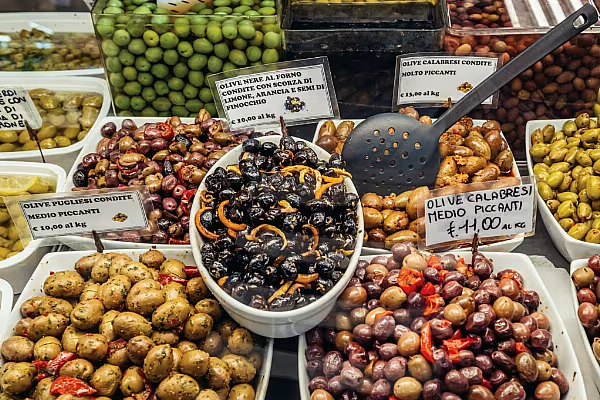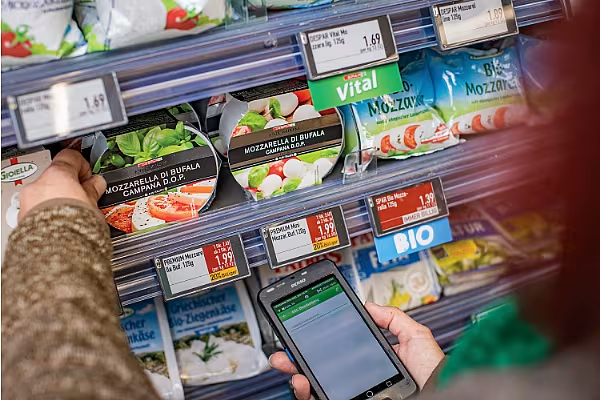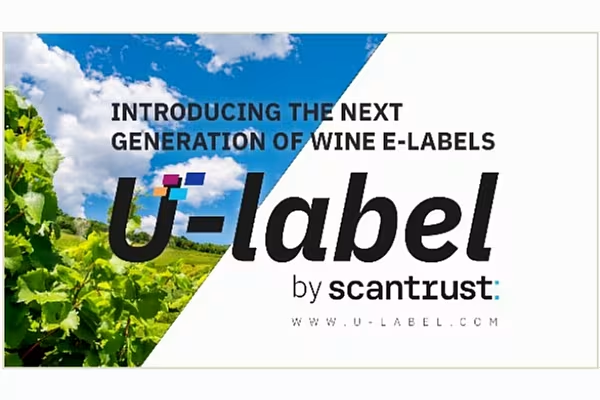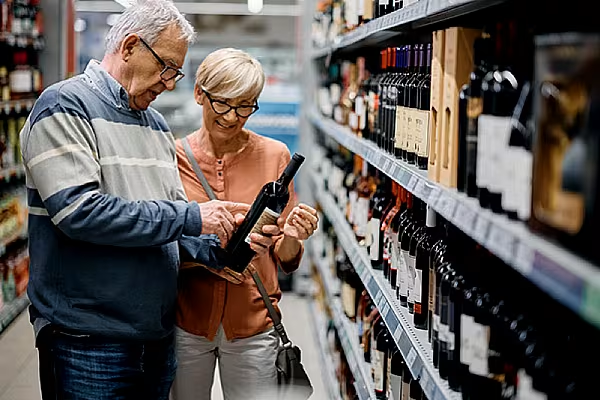New regulations governing the quality of olive oil are likely to reinforce consumer confidence about the sector. ESM reports. This article first appeared in ESM's July/August 2023 edition.
Last November, the European Commission introduced regulations regarding the quality and labelling of olive oil in the European marketplace.
At their heart, the new regulations seek to ‘guarantee product quality’ in a market in which fraud is increasingly evident, while ensuring that marketing standards are being maintained, i.e. that products are labelled accordingly and consumers are purchasing exactly what they expect.
In an explanatory memorandum, the Commission noted that olive oil boasts ‘certain organoleptic and nutritional properties’, which, along with its production costs, gives it ‘access to a relatively high-price market,’ compared to most other vegetable fats, prompting the need for greater regulation. The Commission added that its experience over the past ten years has indicated that ‘certain aspects of the regulatory framework need to be simplified and clarified’.
Easy To Understand
Among the measures contained in the new regulations is the importance of ‘easily readable’ information on olive oil labels – a mandatory labelling regime indicating the place of origin and ensuring that the information provided does not ‘mislead’ consumers, either intentionally or unintentionally.
Notably, with regard to place of origin, this needs to signify not only where the olives were harvested, but also the extraction techniques and practices that influence the quality and taste of the oil. If the oil is extracted at a location separate to where the olives were harvested, ‘this information should be stated on the packaging or labels attached to the packaging to ensure that consumers are not misled.’ Regulations also apply to products that contain olive oil, such as tinned seafood.
According to Silvan Brun, founder of EVOO ag, these new directives are unlikely to cause much disruption to the industry as they currently stand.
“New directives and regulations will not change the olive oil market unless they are completely disruptive,” Brun tells ESM. “The past shows that. The industry is old and has always known how to deal with changes to the rules of the game – mostly to the detriment of consumers, it must be said quite clearly.”
Combatting Fraud
In 2022, European member states performed some 5,195 labelling checks to ensure that EU requirements were being met in relation to marketing standards for olive oil, including extra-virgin olive oil (EVOO), virgin olive oil (VOO), olive oil composed of refined olive oil and virgin olive oil, and olive-pomace oil.
Among the 4,787 label checks undertaken on products sourced from producer member states, some 633 labels were found not to conform to the required legislation, equating to 13.22% of all labels. Among non-producing member states, however, non-conformity was found to be higher, in 103 of 408 labels (25.25%).
This means that the share of non-conforming labels stood at 14.17% in the EU last year – equating to just over one in seven products.
According to EVOO ag’s Brun, measures to tackle mislabelling have more to do with ensuring that the shopper is getting what s/he purchases, rather than any potential health concerns.
“Officially, the problem of falsely labelled olive oils – label fraud – hardly exists, if at all,” he says. “The fact is, however, that this problem still affects more than 90% of marketed olive oil. Scientific studies clearly show this. What we are talking about here is the claiming of a higher quality level on the label than actually is in the bottle, but not of fundamental fraud.
“In this context, it is important to know that second-grade olive oils are still considered very healthy and can be consumed without hesitation. The EU will have no interest in cutting back too much on this.”
Market Conditions
As the world’s biggest olive producer, Spain is something of a barometer for the global olive and olive oil markets. Prices have risen substantially over the past couple of years, as a result of a number of factors.
Firstly, production costs have risen, with fertiliser, energy, fuel and other costs hitting new heights. Secondly – and of more relevance to the olive market in general – hot and dry weather in Spain has meant that this year’s harvest is lower than expected.
“Spain – the world’s largest olive oil-producing country – faced extreme heatwaves and drought conditions during the hottest summer on record in 2022,” Cost Insights’ Nick Peksa tells ESM. “This has resulted in a significant decrease in olive oil production.
“Spain’s Ministry of Agriculture, Fisheries and Food projected a yield of just 680,000 tonnes for the 2022/23 crop – down from the five-year average of 1.37 million tonnes. The actual production by the end of February was 652,080 tonnes, with expectations of less than 30,000 tonnes produced in the last two months of the harvest. Given the weather situation in Spain, olive oil prices may not recover until the 2024/25 season.”
Looking ahead to the 2023/24 crop year, concerns persist among producers that another below-average harvest is on the cards, due to a dry start to the year in Spain.
“Although drought conditions have ended in most parts of the Iberian Peninsula, southern regions of Spain and Portugal continue to experience persistent drought,” Peksa adds. “Recent rains, including rainfall excess in the south-east of Spain, have had little or no benefit for spring crops in drought-affected regions.”
This lack of rain, coupled with high temperatures in May, has impacted blossoming, potentially leading to reduced fruit production and prompting Spain’s Chamber of Deputies to approve a Royal Decree-Law allocating funds for aid measures – “although the amount available to olive farmers is limited, compared to other agricultural sectors,” says Peksa.
Not all are that concerned about recent price spikes, with some commentators noting that diminished production insulates the industry from the race-to-the-bottom approach that the market has seen in recent years.
“High volatility in the production volume of the most important producer – Spain – always has a very big influence on the global market, especially as far as prices are concerned,” says EVOO ag’s Brun. “If production rises to record levels, as we have seen in 2018/2019, prices plummet. If, on the other hand, we have historically low production, prices rise exorbitantly.
“This industry is a victim of itself,” he adds. “Every company – and, ultimately, every cooperative – has to offer its olive oil at the lowest-possible price in order to gain or maintain market share. In the past, competitors have engaged in price wars, losing sight of the fact that they actually represent the same industry and, ultimately, the same agriculture.”
Italy, too, has reported a decline in olive oil production, however, the country has reported “healthy blossoming during the current flowering season,” says Cost Insights’ Peksa. “The country has observed a rainfall surplus, particularly in regions such as Veneto and central and southern Italy, including the islands of Sicily and southern Sardinia. If favourable rainfall continues throughout the summer, Italy’s olive harvest could be promising.”
At the same time, Italy’s production is not expected to be enough to meet domestic consumption demand. The country consumes around 600,000 tonnes of olive oil annually, but it is currently producing a little over 240,000 tonnes, requiring imports to cover a sizeable majority of its olive oil needs.
The Bigger Picture – Olive Oil
According to an overview of the current Market situation in the olive oil and table olives sectors, published by the European Committee for the Common Organisation of Agricultural Markets in May, global olive oil production is below average for the 2022/23 season, falling by 27% on a year-on-year basis, while EU production was 40% lower, year on year. Compared to the five-year average, global production was 24% lower in 2022/23, with EU production down by more than a third (36%).
As the biggest producer in the bloc, the sizeable 54% drop in olive oil production in Spain (compared to the five-year average) was a major contributing factor to the overall decline in EU production, with Italy (-27%) and Portugal (-39%) also seeing declines. Greece bucked the trend, however, with a 42% increase in olive oil production, compared to the EU average.
The net result of this reduced production has been an increase in prices. As of May 2023, EVOO has been priced at €5.86 per kilo in Spain – 72.5% higher, year on year – and 109.4% higher when compared to the five-year average. EVOO prices were also elevated in Italy (€6.48 per kilo – +50.3%, year-on-year) and Greece (€5.70 per kilo – +68.2%, year on year).
According to EVOO ag’s Brun, the current high price of olive oil is no bad thing, in terms of maintaining the stability of the sector. As he points out, at the beginning of the 2022/23 campaign, 671,000 tonnes of olive oil from the previous year’s campaign were still in storage. In other words, too much olive oil has been produced in recent years, leading to the category being undervalued.
“From my point of view, it would be desirable for the price of olive oil to remain at a high level,” Brun says. “That would be good for the olive farmers and ensure that there would be less rural exodus due to impoverishment in the future, but, more realistically, we must continue to expect a very volatile market that can make enormous price jumps from season to season.”
The Bigger Picture – Table Olives
With regard to table olives, global production was down by 2%, year on year, in the 2022/23 season, with EU production falling by 10%. Compared to the five-year average, global production fell by 4% in 2022/23, with EU production falling by 5%.
Again, Spain saw the biggest drop among the major EU players, with a 36% decrease in production on a year-on-year basis (and down by 26%, compared to the five-year average). Greece, however, saw an 80% increase in production, year on year, and a 45% increase against the five-year average. Italy’s table olive production was stable (0%), year on year, while production in Portugal went up by 10%.
“Table olives were not as affected as dramatically as olive oil, as 71% of table olives [in 2022/23] originate from outside of the EU,” says Cost Insights’ Peksa. “Inside the EU, Spain’s production drop was offset by Greece, however, the major consuming markets all experienced price increases.”














